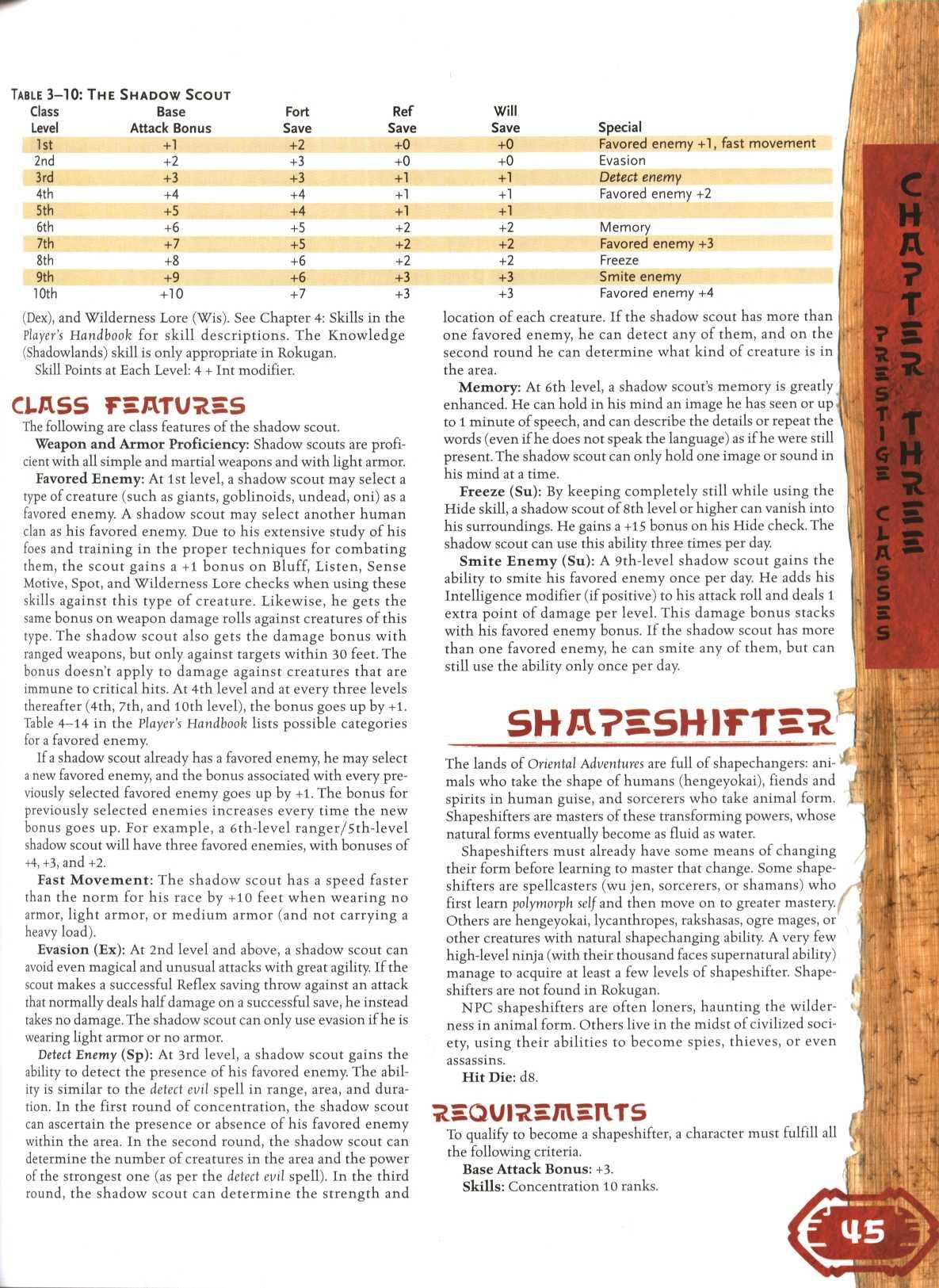CLASSES
PRESTIGE
A wide variety of prestige classes is available to characters in Oriental Adventures, reflecting advanced training or a particular specialization . The only prestige class from the DUNGEON MASTER's Guide appropriate to Oriental Adventures is the assassin-which, along with the ninja spy prestige class described in this chapter, defines the stealthy killers of legend . In Rokugan, samurai learn the art of war, the code of bushido, and the skills befitting an aristocrat in formal schools run by the various families of the great clans of the Empire . Each school teaches unique abilities and has an associated prestige class. Samurai characters can qualify for these prestige classes relatively early, though they often require a very specific selection of feats early in the character's career. As a result, samurai from different schools usually begin play with different feats, and diverge more widely by about 6th level, when most have entered their, school's prestige class. The samurai prestige classes o£ each clan are detailed in Chapter 11: The Empire of Rokugan. These classes include the Hida defender of the Crab clan, the Daidoji bodyguard of the Crane clan, the Mirumoto niten master of the Dragon clan, the Akodo champion of the Lion clan, the Shiba Protector of the Phoenix clan, the Bayushi deceiver of the Scorpion clan, the Moto avenger of the Unicorn clan, and the Mantis mercenary of the minor Mantis clan . Chapter 12 : The Shadowlands includes prestige classes that derive their power from the evil of the Shadowlands, intended primarily for nonplayer characters : the maho-bujin, or Tainted warrior, and the maho-tsukai, or blood sorcerer. If you are not playing in the featured campaign setting of Rokugan, consult with your DM about available prestige
classes. You may be able to use some of the prestige classes in Chapter 11 (ignoring or replacing clan restrictions), as well as those presented in the remainder of this chapter.
This chapter describes three prestige classes-the henshin mystic, the Shintao monk, and the tattooed monk-that are natural choices for monk characters, allowing them to continue improving their unarmed attacks, unarmed damage, Armor Class, and speed. To determine the damage, AC bonus, and speed of a monk character with one of these prestige classes, simply add the character's `monk levels to her monk prestige class levels and consult Table 3-10: The Monk in the Player's Handbook . To determine how many unarmed attacks she can make and at what attack bonuses, add together the base attack bonus derived from her monk levels and the base attack bonus derived from her monk prestige class levels, and consult Table 3-1: Multiple Unarmed Attacks. This table shows how many additional unarmed attacks (after the first, at the character's full attack bonus) the character can make in a round and at what attack bonuses. Characters who have levels in only monk classes always get more unarmed attacks than they would normally get based on their base attack bonus (,additional attacks at intervals of-3, instead of-5) . Characters who have levels in other classes as well may or may not gain an advantage from this, and any advantage is often slight .






























